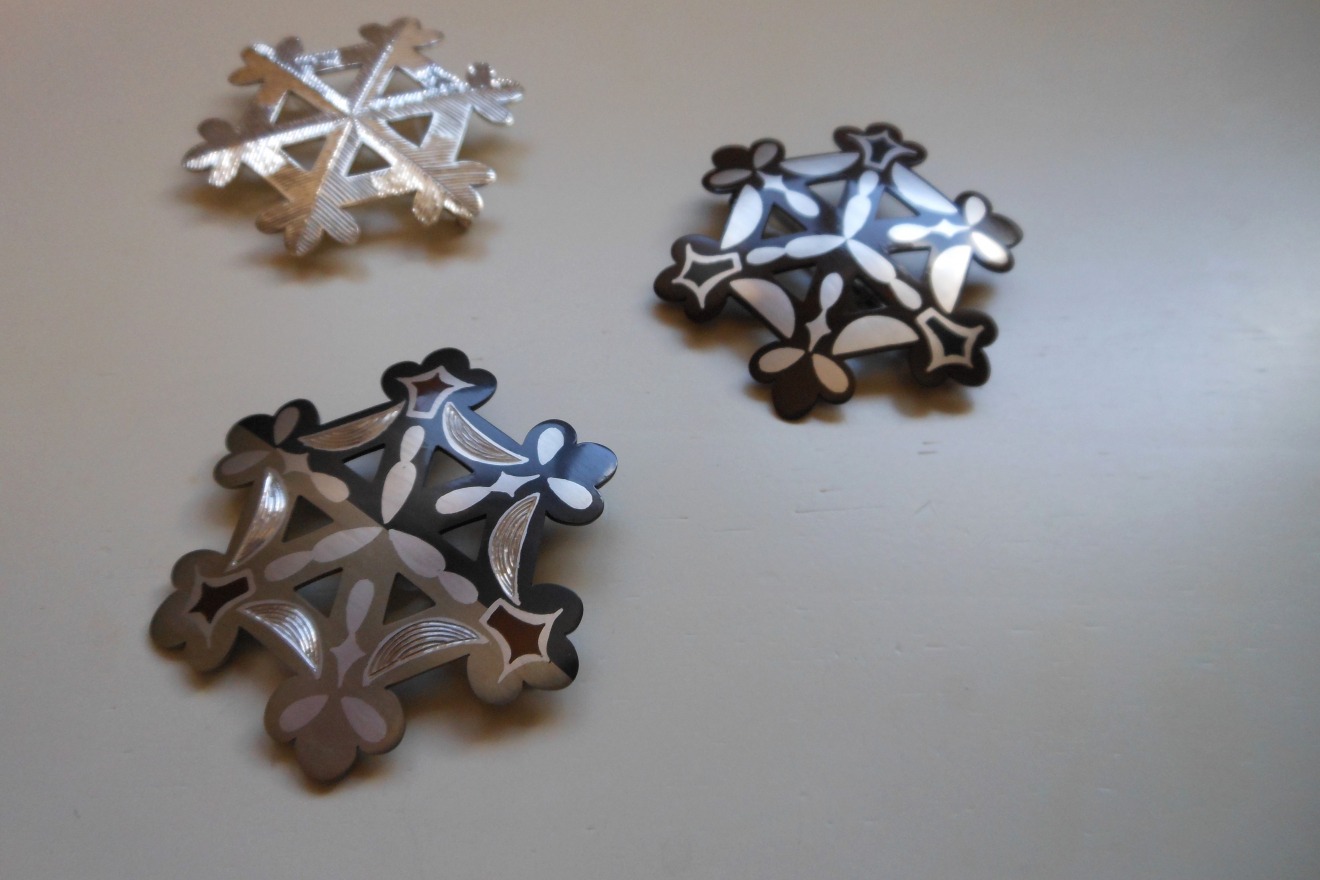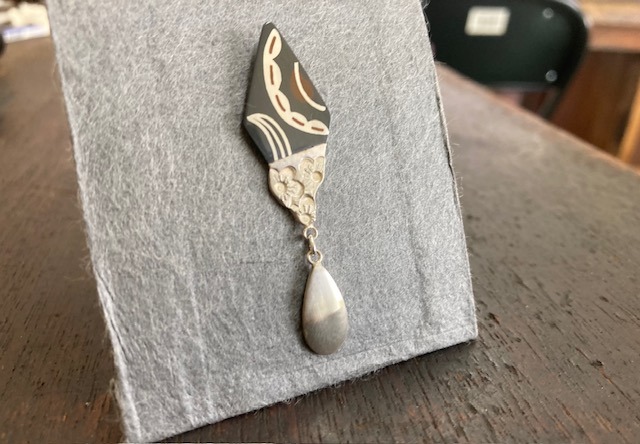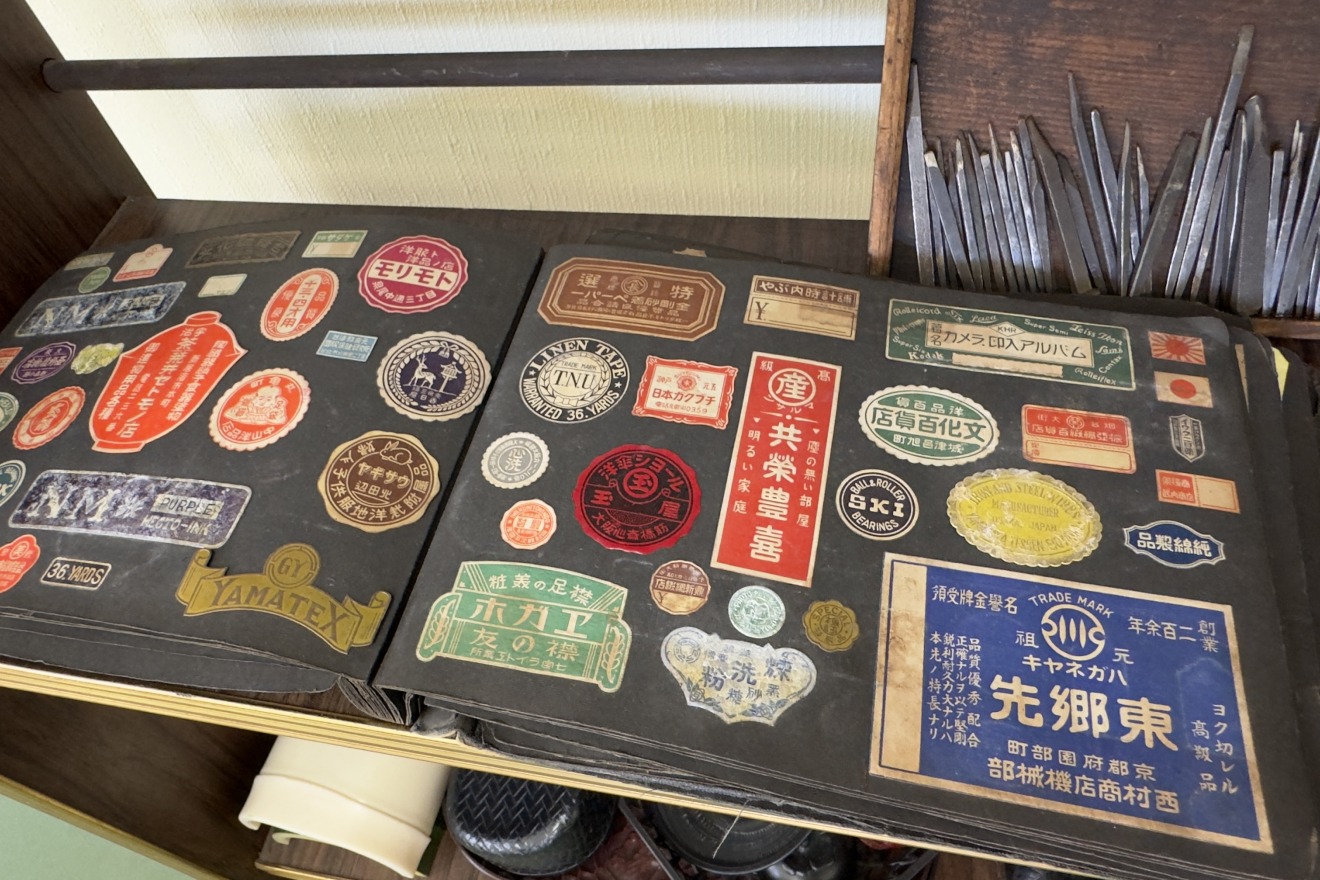Kaga Zogan(Metal Inlay) and metal carving artist Kazue NAKAMURA, KANAZAWA EXPERT #2
KANAZAWA EXPERT” is a program that introduces artists, craftsmen, and other professionals in Kanazawa, a city with a long history of culture, who share their traditional skills and Kanazawa's history and culture with visitors. We will ask these people, who are also guides with a thorough knowledge of Kanazawa, about experiences that can only be had here and ways to enjoy Kanazawa.
This time, we interviewed Ms. Kazue NAKAMURA of “morinoko,” a metal carving studio that produces accessories using the techniques of hand carving with chisels and Kaga Zogan (inlaying).

Fascinated by the beauty of the deep colors of metal
First of all, please tell us about the history and technique of Kaga Zogan.
Kaga Zogan(Metal Inlay) was born at the beginning of the Kaga domain period (the end of the 16th century). It is a decorative technique in which a groove is carved with a chisel into a base metal such as gold, silver, or iron, and then the bottom of the groove is widened with a chisel whose cutting edge has a different shape, and another metal is inlaid into the groove. In the Edo period, Kaga Zogan was used for decorations of swords and horse tack, and Kaga Zogan applied to stirrups, a type of horse tack used for riding, was very beautiful and, as can be seen from the production process, was famous for its sturdiness and resistance to detachment.
What is the appeal of Kaga zogan and metal sculpture?
I have always been attracted to “color,” and I studied oil painting in college because I love color. Kaga Zogan is attractive because of the beauty of the deep colors of the metal, which change during the “ni-iro” process of coloring the finished product. Also, while it is of course good to engrave beautifully, it is also interesting that engraving at different angles brings out the flavor of the piece and that all kinds of variations can be created by combining engravings.
Kaga Zogan pieces with original patterns and accessories with cute motifs combining various patterns are wonderful. How did you start your current work?
My grandfather and father ran a metal carving factory in Kanazawa, and as a child I was not particularly conscious of taking over the family business. I studied oil painting at university, and after graduation, as a natural progression, I helped my father with his work and at the same time studied Kaga zogan and metal engraving by attending the Kanazawa Craftsmen's College “Kaga Zogan and Metal Engraving Special School". Later, after working as a caregiver outside of the prefecture, I made a U-turn and started “morinoko” activities. Currently, I have inherited tools that my grandfather and father used with great care, and hand-engraves them to create engravings and sterling silver accessories.
Using a wide variety of original engraving
Making original name charms
What was the impetus for starting the workshop? Also, what are the attractions and key points of the experiences available at “morinoko”?
I started the workshop after learning the joy of working with people through my experience as a caregiver. When thinking about the content, I asked my friends to actually experience the workshop, and based on their realistic opinions, I arrived at the current style. I want the participants to enjoy the experience, so after hearing what kind of result they are aiming for, I try to keep support to a minimum so that they can immerse themselves in the work.
You can make name charms, pet charms, etc. by experiencing inlaying, in which sterling silver lines are hammered into grooves engraved on a brass plate, or by engraving patterns on brass using a wide variety of original engraving such as dogs, cats, and alphabet letters. Many people make them as gifts for their partners or lovers, and some engrave the names of their “guesses”.
Those who have had the experience say that it is more difficult than they expected, but I hope you will be relieved to know that you can practice for a piece of metal before actually creating it. It is okay if you can't make a straight engraving. Striking twice or daringly shifting the position of the engraving is also a good way to add flavor to the work. Recently, I have also started making bottle names, so we recommend attaching them to sake bottles that you get at a sake brewery in Ishikawa.
There are many things to see and do near the workshop!
Please tell us about the charms of Kanazawa and what spots you recommend.
In my hometown, which I have been familiar with since I was a child, there remains the historic Hokkoku Kaido Road, which was used by the Kaga Clan during the Edo period (1603-1868) and was also walked by Matsuo BASHO, the famous haiku poet. There are many places of interest, such as the ruins of “Shimokuchi no Matsumon,” “Naruwa no Taki(Waterfall),” “Koyasu Jinja Shrine,” which is revered as a god of childbirth and child rearing, and “Yachiya Sake Brewery,” which offers a hands-on sake brewing experience, so I recommend taking a walk. If you are walking from Higashi Chaya Dictrict to morinoko, you may also want to visit the foot temple complex of Utatsuyama, where about 50 temples are scattered.
What does Kanazawa mean to you?
For me, Kanazawa is a compact and livable city. Some people come to Kanazawa on repeated trips, but there are many attractive spots, such as those I just mentioned, even a little far from the tourist attractions, so I would like them to enjoy their visit while strolling around.
morinoko Kazue NAKAMURA
Born in 1978 in Kanazawa City to a father who ran a metal sculpture shop, she graduated from Kinjo Junior College in 2000 with a degree in oil painting. While helping out in the family business, she studied Kaga Zogan under Mr. SAKAI Densho at Kanazawa Craftsman University's “Kaga Zogan and Engraving Specialized School”. After working as a caregiver outside of the prefecture, she returned to Kanazawa and started her career as “morinoko,” winning a prize at the 33rd Traditional Japanese Metal Crafts Exhibition in 2004, the 68th Kanazawa City Craft Exhibition in 2012, the 74th Kanazawa City Craft Exhibition in 2018, and others.





























